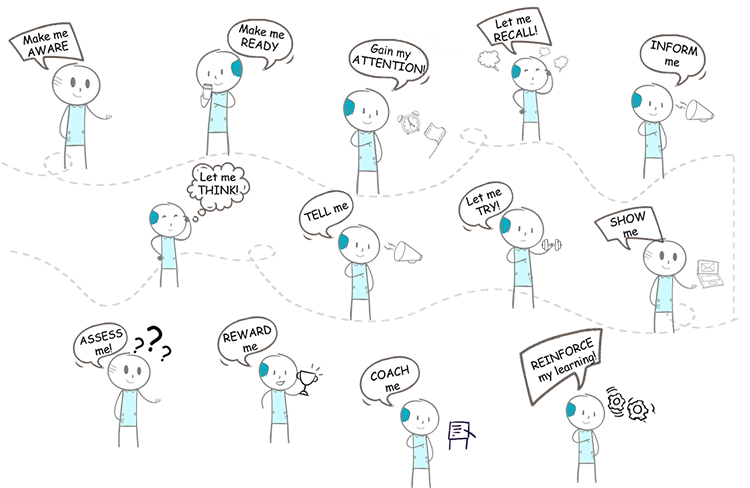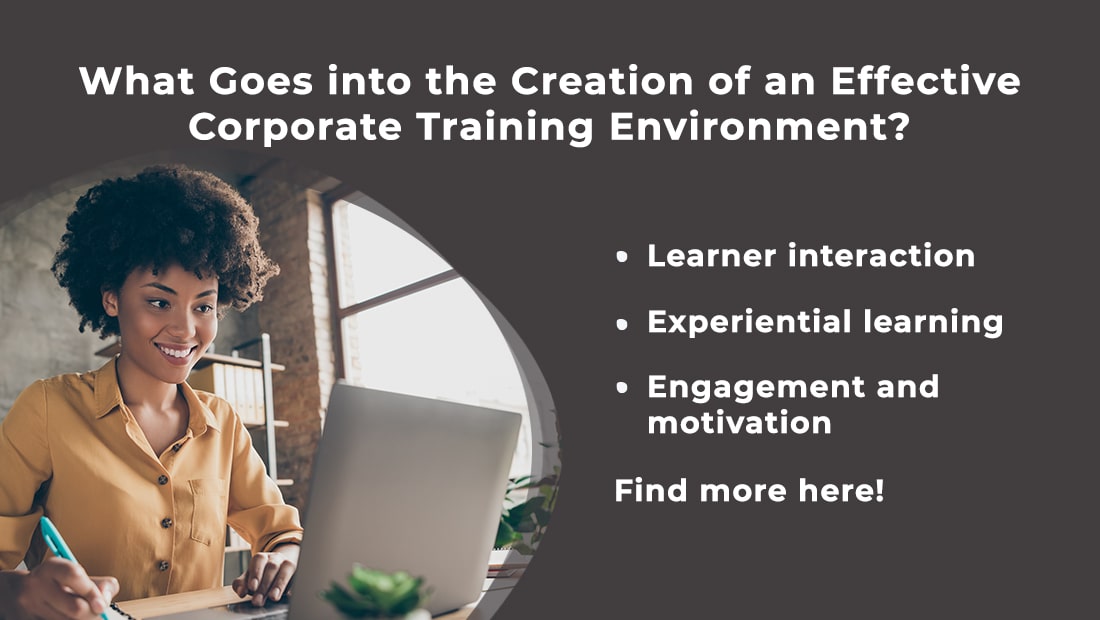Corporate Training for the New-Gen Workforce: Keeping up with the Times

Hello training managers, welcome to 2020! Before we start, I’d like you to do something for me. Look around. Do you see anything different from, say, 2010? Maybe you’ve shifted to that corner office with a view, and yes, technology has changed, your MAC operates faster… But what is it that has changed the most? Yes, it’s the people. Suddenly you are not surrounded by people in formal suits; but by young, opinionated millennial newbies, maybe in hoodies. And it’s your job to introduce them to the joys of corporate training!
“What’s special about the Gen Y and Gen Z?” you ask. They are different, because their world is different. Today we live and work in their world – the world of the Digital Native – a digital world of booming technological advancements.
The Changing Face of Learners and Corporate Training
6 tips for designing a corporate training strategy for millennials
- A complete learner-centric learning experience
- A blend of online and offline experiences
- Anytime, anywhere learning
- Short learning nuggets for easy-to-digest training
- Collaborative and social learning
- Edutainment
You can’t satisfy them with simple eLearning. Technology is not a novelty for them as was the case with Baby Boomers, mere digital immigrants. They don’t need hand holding to use technology; in fact, they can give us a few pointers. To train them effectively, you need to go beyond the traditional – you need to understand them, know what drives them, and figure out what they really desire.
Download this guide to design eLearning that appeals to the right brain.
So, what should you offer them? Well…here are some ideas.
6 Ways of Keeping up With the Changing Corporate Training Culture
A Complete Learner-Centric Training Experience
What the Gen Y (millennials) and Gen Z care most about… are identity and individuality. Each of them wants to be recognized as a unique individual while still being part of a larger community. So, an off-the-shelf, one-size-fits-all eLearning course is a complete no-no.
The key to effective corporate training for new-gen employees lies in personalization. You can do this with something as simple as a role-based online training course, where learners can type in their names and choose an avatar. You also need to make sure the eLearning course content is tailored to fit their needs and job-roles.
There is a simple way of building a personalized training program for new-gen employees, where training is seen as a journey, each milestone taking them deeper into the learning experience.

A Blend of Online and Offline Experiences
It is a myth that technology is the only way to engage millennials. Truth be told, they can be as engaged in a collaborative team building exercise as in a game-based eLearning course. Going in for a full-fledged eLearning-only plan just for the sake of digitalization is something to be avoided. The use of technology in training should be backed by its usability and effectiveness. The best plan of action is to blend both online and offline training formats.
Remember, online training doesn’t only mean eLearning, and offline training doesn’t only mean classroom sessions with pen and paper! There are other training formats, both offline and online, which can be used together to build a perfect blended learning plan. Virtual classrooms (VILT), seminars, webinars, collaborative learning, mobile learning, and peer-mentoring are a few of the many training formats that can work as part of a blended learning program.
Anytime, Anywhere Learning
According to reports, an average urban employee spends 50-90 minutes every day in commuting to work. And do you know what their most popular pastime is during this commute? Mobile learning!
The mobile is more than just an accessory for millennials and Gen Z workers. It’s a platform for gathering information, interacting with SMEs and instructors, collaborating with peers, and a necessary tool in workflow. Training a mobile-addicted workforce becomes convenient, quick, and more effective with mobile learning, allowing learners to have the all-important self-directed, self-paced learning experience.
Short Learning Nuggets for Easy-to-digest Training
The Gen Y and Gen Z employees are an eclectic bunch, always curious and open to new information, great at multitasking but easily distracted as well. Hmm… How can we effectively engage them in corporate training? The answer is short and simple – microlearning.
Say “NO” to lengthy eLearning courses, and go for short and easily digestible learning nuggets that provide specific and instant information without any dilly-dallying. Microlearning courses are long enough to give useful information and short enough to ensure learners remain attentive and not get distracted.
Moreover, using microlearning gears up mobile learning as well. The combination allows instant access to training the learner can access anytime, anyplace. You can leverage the power of microlearning and mobile learning to provide effective performance support to your employees.
Collaborative and Social Learning
We all know about the millennials’ love for socializing. They are at home in this world where life experiences are constantly documented and shared. The success of corporate training today depends on these social and collaborative learning practices working alongside formal training.
Social learning elements such as discussion boards, chatrooms, online forums, and communities are becoming increasingly popular in eLearning. Most LMSs today allow these features. Even social media channels such as Facebook, LinkedIn, WhatsApp, and Twitter help employees in building networks with industry experts and accessing job-related information.
Social learning doesn’t only include digital platforms. A good old team building or role-playing exercise among fellow employees also goes a long way in preparing learners for their job-roles. Workshops, peer-mentoring, and job-shadowing are training practices which can give new-gen employees a chance to become better acquainted with their peers and learn new skills.
Edutainment in Corporate Training
‘All work and no play, makes Jack a dull boy.’ And indeed, millennials and Gen Z are not those who will willingly sacrifice personal life and fun for work demands. And they hate to be bored!
They love interesting work and a good work-life balance. They believe in edutainment – education with entertainment. A good edutaining plan for new-age learners should include more visual formats than text and reading materials.
Gamification and game-based training strategies will also make training infinitely more fun and engaging for them. Instructional design strategies such as Learning through Exploration and Discovery (LEAD) too are extremely popular with these young learners.
Summing it Up!
Aren’t you glad to see this shift in both the workforce age demographics and corporate training practices? It sure is an interesting time to be a training manager. Planning for a training design conforming to changing learner profile is just one step toward becoming an industry expert. There are many other principles and new ideas you can work on if you hope to become an online training champion. Our book here is just meant to help you along the journey.



![7 Tips to Design Microlearning That Shines on Mobile Devices [Infographic]](https://blog.commlabindia.com/hubfs/blogs/microlearning-mobile-friendly-design-infographic.jpg)

